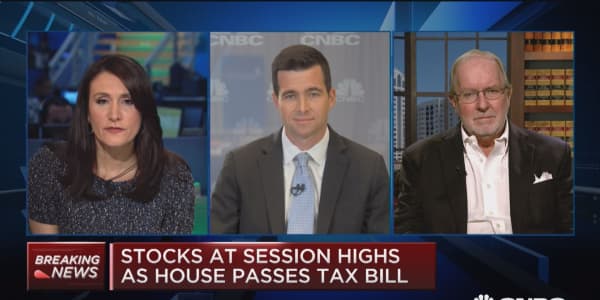Charles Schwab's IMPACT conference happens this year against a challenging backdrop for investors, who may have to start bracing for a different world ahead.
Since the 2012 conference, the stock market has surged and bonds have taken a beating, an environment quite different from the previous four years since the financial crisis.
However, the landscape is shifting, and investors will have some choices to make if the economy continues to improve and the Federal Reserve gets more aggressive in contemplating a policy change.
(Read more: Jobs shocker may force Fed's hand)
The Schwab conference, which runs from Sunday through Wednesday, is unique in that it brings together thousands of investment professionals from the across the country yet often lacks those big headline-grabbing speaker names that its counterparts offer.
Instead, it focuses on allowing meat-and-potatoes financial advisors, portfolio managers and fund executives a chance to network and discuss the needs of their mostly retail customers.
They should have plenty to talk about.
Retail money has been pouring into equity funds this year, with about $250 billion in new cash against a more or less flat year for fixed income. Mom-and-pop investors had been noticeably missing from the 41/2 year market rally, choosing instead to pour money into bonds.
(Read more: Why small caps may signal bigger problems: Pro)
Recent trends have seen the new money flow much more quickly into foreign stocks than domestic.
For instance, while October was a decent month for U.S. equity flows, money has been moving much more consistently to foreign markets. European equities, for instance, have seen 19 consecutive weeks of inflows while Japanese stocks are on a nine-week streak.
Savita Subramanian, head of U.S. equity and quantitative strategy at Bank of America Merrill Lynch, summarized in a note what investors face from the clouded market as viewed through the prism of Fed activity:
Our house view is that the next few years could be accompanied by slowly rising long-term interest rates—essentially the normalization of rates from abnormally low levels. Our economics team expects the Fed to begin tapering its quantitative easing program within the next several quarters, which should put upward pressure on long rates. ... The fiscal and monetary tightening that we have seen this year marks a complete reversal from the prior regime, and is likely to have long-lasting implications for market leadership, in our view.
For the IMPACT attendees and their clients, the hard work may be just beginning.
—By CNBC.com.




